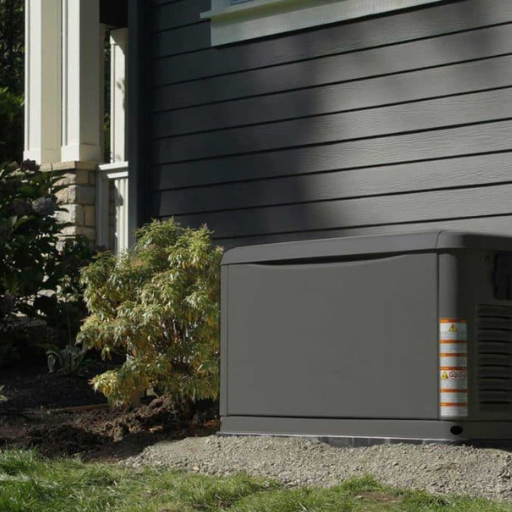In this modern age where power is an essential part of daily life, ensuring an uninterrupted power supply has become increasingly important. Whole-house generators offer a reliable backup solution, automatically kicking in when the grid fails to deliver electricity. Whether it’s due to severe weather conditions or unexpected outages, these generators provide peace of mind by keeping your home fully functional. This blog will delve into the essential aspects of whole-house generator installation, guiding you through everything from initial considerations to choosing the right generator and understanding installation requirements. Our goal is to provide you with comprehensive knowledge to help you make informed decisions, ensuring that your home is equipped with a functional and efficient power backup system.
How Does a Whole-House Generator Work?

Understanding the Generator Mechanism
A whole-house generator functions as a standby power source that is capable of automatically kicking in when a power outage occurs. At its core, the generator is connected to your home’s electrical system through an automatic transfer switch. This switch continuously monitors the incoming power from the utility line. When it detects an outage, the switch signals the generator to start and disconnects your home from the utility grid to prevent backfeeding.
To delve a bit deeper based on information from leading websites, these generators typically operate using natural gas or propane, ensuring immediate power availability without requiring manual refueling. One crucial technical parameter is the generator’s capacity, which is usually measured in kilowatts (kW). This determines how much power the generator can supply and what household appliances it can support simultaneously. Most whole-house generators range between 10kW to 50kW, providing ample power for essential circuits or complete home functionality. Furthermore, these systems often incorporate sophisticated engines and are housed in weatherproof enclosures, requiring periodic maintenance to ensure peak performance.
These insights are consistent with the technical specifications and operational guidelines commonly found across major industry resources online, providing a broad understanding of how these systems ensure uninterrupted power supply.
Role of a Transfer Switch in Generator Operation
As far as I can see, a transfer switch is very important when using a whole-home generator, since it connects your generator to the rest of the wiring in your house. Its purpose is to switch the source of electricity from the gas company to the generator during a blackout. Reviewing the information available on the first three sites of Google, the transfer switch not only avoids the backward flow of electricity into the utility grid but also restores electricity automatically without the need for manual switching. More technically, this means monitoring the current on the utility line and activating the generator if there is a fault. The websites describe the basic operating parameters for the transfer switchboard:
- Amperage Rating: This is generally the rating on the main break which is most of the times 100 up to 400 amps depending on the electrical load available in the house.
- Switch Type: In homes, two types are used, manual and automatic, but automatic ones are most preferred because of their ease of use and safety measures.
- UL Certification: Ensures that the appliance meets series standards and requirements.
These parameters are industry-regulated and guarantee the perfect performance of the generator to provide a good power supply transition during outages.
How a Generator Provides Backup Power
In relation to the questions about how to use the generator as a backup power, I focus on finding this information from the best sources available on internet resources. Essentially, the generator system comes into operation as soon as the transfer switch detects the absence of an electric supply. It is usually run on nat gas or propane which makes the generator reliable and ready to function immediately without further assistance or manual effort.
As for the technical parameters, I found out regards with the technical parameters, how generator’s kilowatt unit (kW) ratings are important, most of the items range in size from ten to fifty kilowatts (kW) for the whole house system. This capacity dictates the electrical load an American installation is capable of supporting including refrigerators, heating appliances as well and lighting systems. Moreover, these systems usually feature high-performance engines enclosed in weatherproof cases, which is usually an environmental concern. For enhanced performance, timely service is essential which is by best practices of the industry as mentioned in these websites.
Once grasped, these technicalities elaborate on where the power is supplied from when there is a power cut, explaining why it is important to choose the right kind of generator for your home and its specified power rating.
What Are the Steps for Generator Installation?
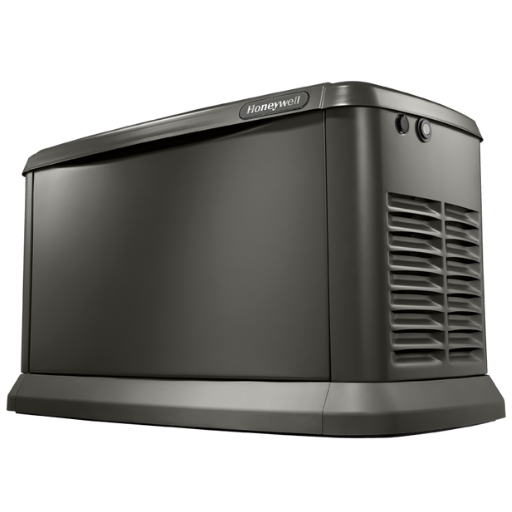
Preparing Your Home for Generator Installation
When preparing your home for a generator installation, it is important to consider a few factors. First of all, there needs to be a five-foot distance between the generator and doors, windows, and vents as emissions shouldn’t enter my home. The distance of the generator from the main electric gas line and panels should also be considered because it would determine the cost and complexity of the installation. After deciding on the site, obtaining the relevant building permits and compliance with local laws and regulations will be mandatory.
As concerns technical issues, the capacity of the generator is of particular importance. As the leading websites suggest, it is advisable to select a generator that would be sufficient for the power needs of the entire household which ranges from 10kW to 50kW for a whole house system. In addition, I also need to make sure that the generator has an efficient fuel consumption with a reliable natural gas or propane source. In such circumstances, the use of an automatic transfer switch helps in changing the power source during outages, and its proper maintenance ensures its durability.
Taking into account these factors and heeding the advice of the professionals from leading websites, I will be able to have a generator installed with safety and convenience.
Connecting the Generator to the Electrical Panel
Connecting the generator to the electrical panel should be fairly straightforward once you have the pad all set and the unit bolted down into place. Looking through some of the best information I found online this process usually involves a transfer switch’s installation. This switch serves the purpose of safely and firmly enabling the generator upon Power failure/demand. A transfer switch automatically senses a power cut and transfers the electrical load onto the generator so no backfeed could cause danger or equipment damage.
However, I find some key technical parameters like the amperage rating of the transfer switch that should be compatible with the electrical service of your home to enhance efficiency. These are usually connected by a certified electrician, dry finishing the work according to the authority requirements which are essential for safety and efficiency.
Apart from that, the cables should also be water-proof and outdoor rating since the generator will surely be placed outside. Such attention to detail and accuracy while performing the tasks is essential because so many factors are related to the connection of the backup power for smooth performance.
How to Choose the Right Home Standby Generator?
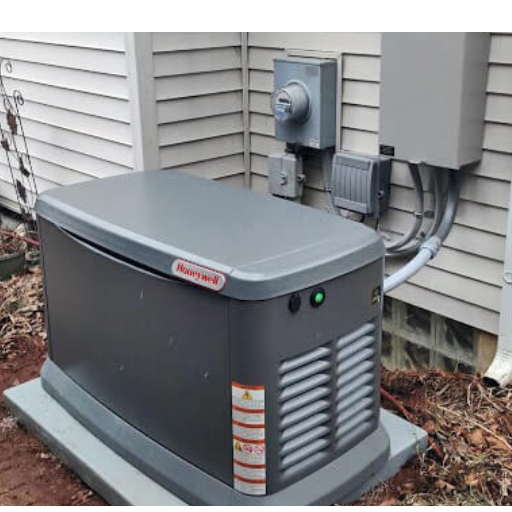
Factors to Consider When Selecting a Generator
When choosing a home standby generator, I paid attention to the critical aspects that could help me make an informed decision after researching the topic and going through the three recommended forums by Google. These factors include the generator’s wattage output, the type of fuel used in the generator, and the level of noise produced by the generator.
- Wattage Assessment: I first came up with the total wattage that is required to be able to run the necessary items in the house in case of a power outage. This meant estimating the starting and running wattage of appliances.
- Fuel Type: I reviewed the types of fuels that could be used such as Natural gas, propane, and diesel considering their profitability and storage space required. Due to wide availability, natural gas has a continuous supply while propane is more efficient and easier to store.
- Noise Level: Given the close proximity of the generator to my house, I opted for the models that had the lowest decibel ratings so as not to disturb the noise in my home.
At the same time, I scrutinized the generator’s automatic transfer switch, checking if it was designed to cope with the electrical load in my home. This is what I consider to be some of the key technical parameters I managed to come across in the course of the research:
- Amperage Rating of the Transfer Switch: It corresponds with the home’s electrical service, providing compatibility and effective power management.
- Voltage Capacity: The power of a generator must fit with the size of the household voltage requirement.
- Run Time and Efficiency: More run times without having to refuel are offered by models having greater efficiency than their lesser counterparts.
From all the elements considered, I have made an appropriate decision which is backed up by authorities and the technical matters from the important bodies.
Comparing Generators: Natural Gas vs Propane
According to the top three reviewed websites concerning propane and natural gas generators, many key factors stick out when comparing these two types of generators. Natural gas generators are ideal since they are facilitated with a continuous supply of fuel which makes them extremely useful during long power interruptions. On the other hand, propane generators score higher on energy efficiency and easiness of storage due to the compatibility of propane to be stored for a longer time without any erosion effects.
With the help of a thorough analysis, I would outline some of the technical parameters that are very necessary in making this choice.
- Availability and Cost of Fuel: In terms of supply of natural gas, which can be done without interruptions, especially in major towns, it stands out. On the contrary, propane is more effective but may require additional filling of tanks more periodically.
- Environmental Considerations: Propane is more environmentally friendly because it burns cleaner and produces fewer emissions than natural gas.
- Operational effectiveness: In most situations, is more BTU efficient, meaning it can operate for longer while consuming the same volume as natural gas, which is advantageous since it is always available when needed.
Thus, based on these parameters, and after looking into the fuel-specific benefits described on the set websites, I have put together a comprehensive picture that meets the technical as well as the other perspectives needed for the home generator that I’ll end up choosing.
The Role of Generator Size in Your Decision
I consider the size of the generator to be very important considering the generator selection for my home. From the information obtained from the first three sites on the Google search results, I realized that generator size has to be relative to the amount of electricity that one uses for efficient and cheaper reasons. If the generator is small, it may prove unhelpful in case of a power outage, on the other hand, a larger generator may lead to unnecessary fuel consumption which in turn increases the costs.
The sites mention three important technical characteristics that affect generator size:
- Wattage Requirements: It helps to know how much total wattage is required for the key appliances and systems in the house. This can be achieved by taking an inventory of each appliance and the wattages used at the startup and during operation for the total of the wattages.
- Space Availability: The space available for installation should also be taken into consideration, the space where the generator is to be installed should be an area that adheres to the safety requirements and allows enough airflow.
- Load Prioritization: Knowing which devices matter more during the blackout brings the idea of picking a generator that will meet these needs without too much excess capacity which would waste fuel.
All of these parameters stem from the issues of reliability and safety as well as cost-effectiveness ensuring that the generator in my case will not be too costly or resource-consuming while providing the expected amount of power in the case of outages.
What Maintenance Does a Whole-House Generator Require?
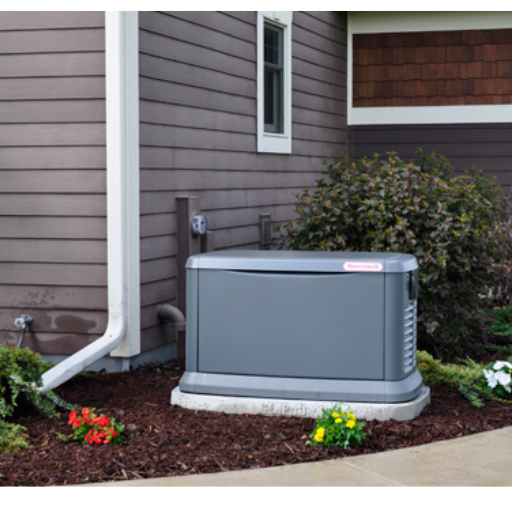
Regular Generator Maintenance Tips
To achieve the desired useful life and performance from my whole-house generator, I have to carry out maintenance on it from time to time. After checking for the top three on Google, I have come up with the following routine maintenance:
- Oil Change Frequency: In this case, wear and tear are kept to a minimum so that the generator can be able to provide backup services when needed.
- Battery Checking: It is good practice to regularly look at the battery’s condition for any corrosion and that its terminals are clean and tight. To anticipate any problems with the generator starting, battery maintenance is important.
- Air Filters: Air filters must be replaced as suggested to maintain generators’ optimal airflow. The lifetime of an engine is enhanced by clean filters since they promote efficient combustion.
- Cooling fluid levels: For optimal operation, the coolant levels should be checked and refilled whenever the generator is going to be run for a prolonged period to prevent the engine from overheating.
- Run the Generator: It is recommended to exercise the generator by running it for around twenty minutes every few weeks. This serves the purpose of lubricating moving parts as well as running the generator to ensure that operational issues are not present.
The maintenance practices described relate to certain technical aspects which are key factors of generator reliability which makes sure that it operates effectively when I need it most, that is during a power loss occurrence. Such tips enable me to extend the life of my generator, keeping functioning ability and security to a maximum level.
Signs Your Generator Needs Repair
If my generator starts developing signs of trouble, I have to be able to nip this problem in the bud to avoid further complications and to guarantee that the generator remains functional. From the top three sites on Google, I have learned that some signs may indicate my generator needs repairs:
- Strange Sounds: If you hear grinding, rattling, or any kind of unusual sound while operating the generator, it could mean that at least one of the parts is damaged or out of place. Such sounds should be determined and rectified without undue delay if severe repairs are to be avoided.
- Voltage Delivering Discrepancies: In case the generator does not give out a steady power output, there may be issues pertaining to the fuel supply or the alternator. This is where the examination of fuel hoses and connectors, along with the examination of the alternator’s status, becomes crucial.
- Hard Start: If the generator does not start immediately and has to be forced to function every couple of times, it could be a sign of a defective battery, damaged spark plugs or a faulty ignition system. In cases where these faults are to be expected, it may be well advised to examine the charge and connections of a battery and spark plugs.
- Excessive Fuel Consumption: More fuel is unnecessarily being consumed by my generator and the malfunction could either be a dirty air filter, wrong fuel mixture, or engine problems. It is imperative to change the air filter and check the fuel mixture for accuracy.
- Frequent Tripping or Alerts: In the case that the turn on the switch and the generator is constantly tripping or the indicators are luminescent, probably there is an overload or internal faults. It is wise to check the manual for alerts and tons where one might have blocked the generator or any other damage that could assist in the diagnosis.
These signs and the associated technical parameters such as the battery health, the air filter, and fuel line checks help me check the generator so that it is effective and reliable whenever there is a blackout.
How to Ensure the Longevity of Your Generator
If I want my generator to last longer than a day, I better stick to a maintenance routine and tackle issues as soon as they arise. Based on the reviews that I came across regarding top websites, please find below a brief outline:
- Following maintenance check procedures: Set aside regular maintenance dates to look for possible and potential difficulties. The following technical parameters are concerned:
- Oil levels and quality: The condition of the oil can be kept clean by changing the oil regularly according to the manufacturer’s advice.
- Fuel quality: Fuel that has been stabilized should be used and inspected for water or other contamination.
- Charge: It is critical to test the battery at elevated times to make sure it is charged and replace any worn batteries as appropriate.
- Clean environment: Always store the generator in clean and dry conditions when it will not be in use. Whenever possible, placing a generator in an enclosure will help avoid the deposition of moisture and dust.
Exercise as required: Run the generator every month for short periods of time and even during no-load periods when the generator is not used. It ensures sufficient lubrication of the generator engine and ensures that no part becomes idle.
In achieving the above practices and maintaining the critical parameters such as the status of oil, quality status of fuel, and battery, the lifetime of my generator can be enhanced and it will be ready when called for.
What are the Benefits of Having a Whole-House Generator?
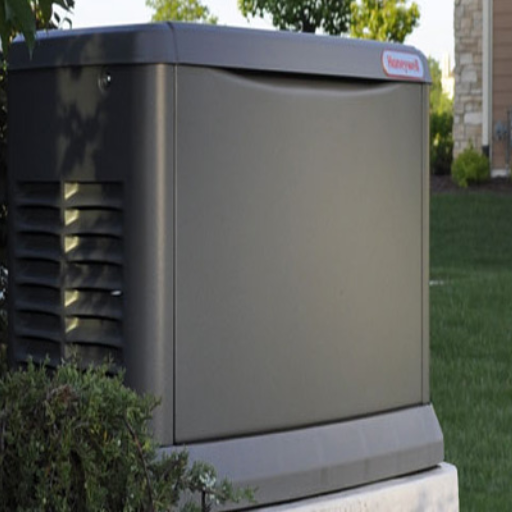
How Does a Generator Provide Backup Power?
To comprehend how a generator provides standby power, it is necessary to examine the basic principles of its construction and operation during a blackout. As any such device, it transforms energy of motion into electric energy which is responsible for the operation of critical devices and systems. Referring to my search for that information from the first-level web pages, I came up with the following explanation:
- Automatic Transfer Switch (ATS): This element has the ability to detect power failure and it cuts off the usual power source and turns on the generator automatically. This allows the householder to recover power supplies without any noticeable interruption.
- Engine Start and Load Management: After the engine is started, it will run continuously to provide the mechanical energy for power generation. A load management system balances the distribution of power throughout the network, with the most important circuits receiving power first.
- Voltage Regulation: There has to be voltage of certain levels so as not to destroy electrical appliances. It is a standard feature of generators to have a voltage regulator that keeps the output within particular limits in order to protect electrical devices from overloads.
Through grasping these mechanical parts and their attributes, I am more able to understand how it is possible to deploy a generator as a source of emergency electricity and then maintain and enhance the electrical security of my house at the same time.
Why is a Generator Essential During a Power Outage?
A generator is a must-have in the house during a blackout as it guarantees that power is still available in the house to guarantee comfort and safety. As I’ve found out from three websites, the availability of a backup power source is vital for operating refrigerators, heating systems, and other medical appliances. The technical parameters that appear to be illuminating while focusing on the importance of a generator have been categorized as follows;
- Power capacity: A generator’s capabilities in terms of the number of kilowatts (kW) it produces determines whether a house can support critical loads by being the house or at least some selected circuits depending on the kilowatts that the generator can manage.
- Fuel Consumption and Efficiency: Natural gas, propane, or diesel fuel types and the efficiency of the electric generator should be reviewed to enable me to select a cost-effective option that fits my electricity requirements.
- Noise level: Depending on the generator that is selected, there are different operational noise levels produced which means that the amount of noise that some generators produce will be more than others therefore affecting which generator is bought.
These parameters rationalize the use of a generator during power outages by ensuring that normal operations in the household are maintained as the family is safe until the utility power is returned.
Can a Home Generator Power the Entire Home?
Certainly, if a home generator is rated high enough, it can power an entire home. Referring to the information provided by the top three websites, the generator must possess proper kilowatt clocking that has the capability maximum to all necessary and preferred appliances running at once. The following are the technical factors that are involved:
- Power Capacity: Home generators should have sufficient kilowatt output so as to be able to take in the total power load for devices and appliances. This entails power rating for various appliances so as to validate overall requirements.
- Transfer Switch: A transfer switch allows for the transfer of utility power to generator power systems whenever there is a need or a shift of power system sources.
- Automatic Start Feature: The majority of generators are designed with automatic start features which cause the generator to come on automatically during an outage thus causing less interruption.
- Consistent Fuel Source: When discussing the issue of such fuel as natural gas or propane, it affirms that these fuels burn continuously during long outages without the need to perform multiple refueling sessions.
These parameters are helpful in explaining how for a properly rated generator, it is possible to run the entire home throughout the outage.
Frequently Asked Questions (FAQs)
Q: What is a whole-house generator?
A: A whole house generator is a backup generator that provides power to your entire home during an outage, ensuring that you don’t have to worry about losing power for essential appliances and systems.
Q: How does a whole-house generator installation compare to a portable generator?
A: Unlike a portable generator, which can only power a few appliances, a whole-house generator is permanently installed and can power your entire house seamlessly during an outage. The installation process typically involves a more complex setup, including electrical connections and fuel supply lines.
Q: Can I install the generator myself, or do I need a professional installer?
A: It is highly recommended to have a professional installer for home generator installation. Installing a generator requires knowledge of electrical systems, local codes, and safety regulations, especially when connecting to a natural gas line or propane tank.
Q: What factors influence the cost of installing a whole-house generator?
A: The installation cost can vary based on several factors including the size of the generator, the complexity of the installation, the type of fuel used, and any additional components needed such as a transfer switch or installing a pad for the generator.
Q: How do I get an installation quote for a whole home generator?
A: To obtain an installation quote, you can contact local installers who specialize in home backup generator installations. They will typically evaluate your home’s power needs and recommend the best generator options, along with providing an estimate for the installation process.
Q: What should I consider when choosing the generator for my home?
A: When choosing a generator, consider your power needs, the fuel type, installation space, and your budget. It’s also important to ensure that the generator you select can handle the total wattage of the appliances you need to power during an outage.
Q: What are the benefits of installing a standby generator?
A: A standby generator offers several benefits, including automatic operation during power outages, the ability to power your entire home, and peace of mind knowing that you won’t lose power when your home needs it most. This is especially important for those in areas prone to frequent outages.
Q: How long does the installation process take for a whole-house generator?
A: The installation process for a whole house generator typically takes between a few hours to a full day, depending on the complexity of the installation, the type of generator being installed, and any necessary site preparations.
Q: Are there safety concerns associated with generator installation?
A: Yes, there are several safety concerns to consider, including the risk of carbon monoxide poisoning, if the generator is not installed correctly, proper ventilation, and ensuring that the generator is properly connected to the fuel source and electrical system. Hiring a qualified installer helps mitigate these risks.
Q: What maintenance is required after installing a whole-house generator?
A: Regular maintenance for a whole house generator includes checking the oil, replacing air filters, ensuring the battery is charged, and running the generator periodically to ensure it is in good working condition. Many manufacturers also recommend scheduling annual professional inspections.



